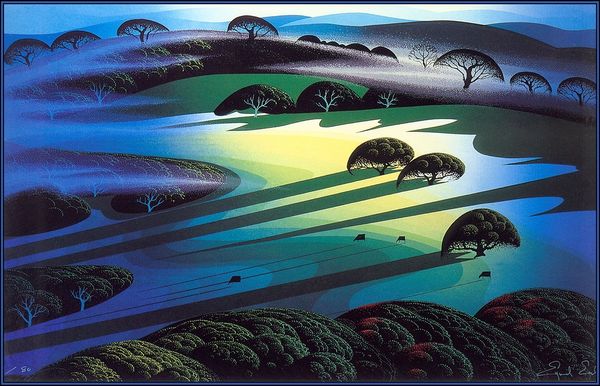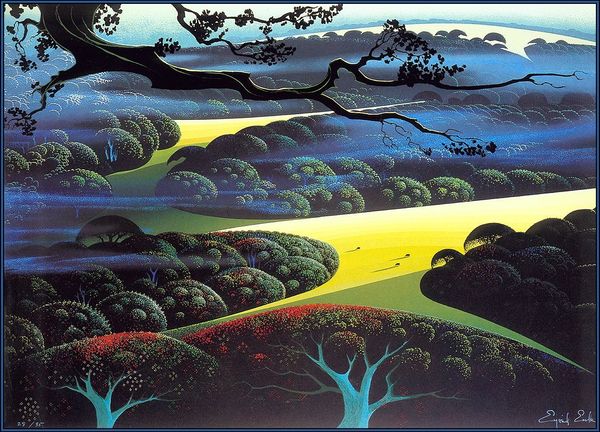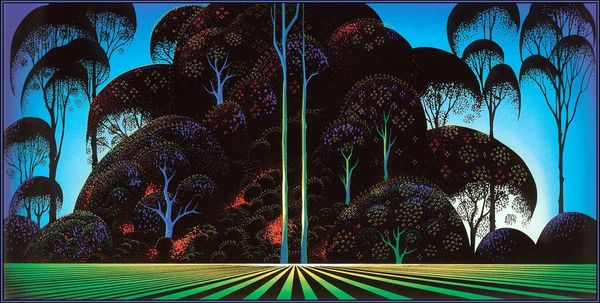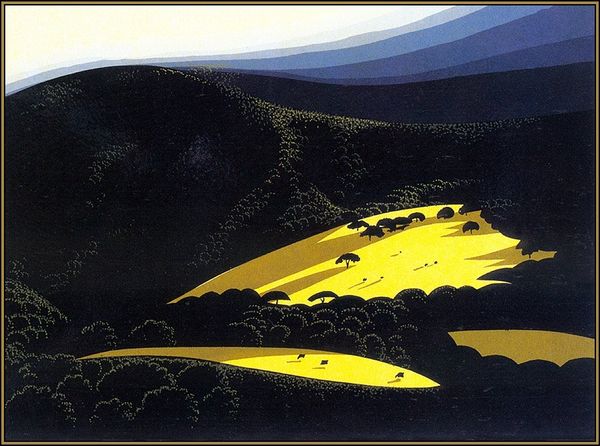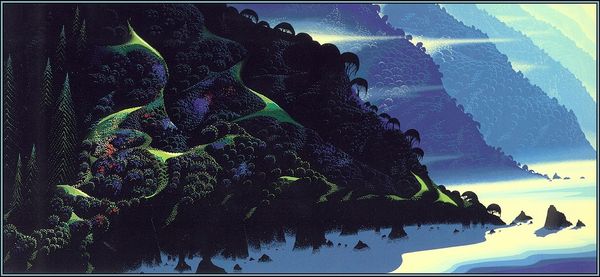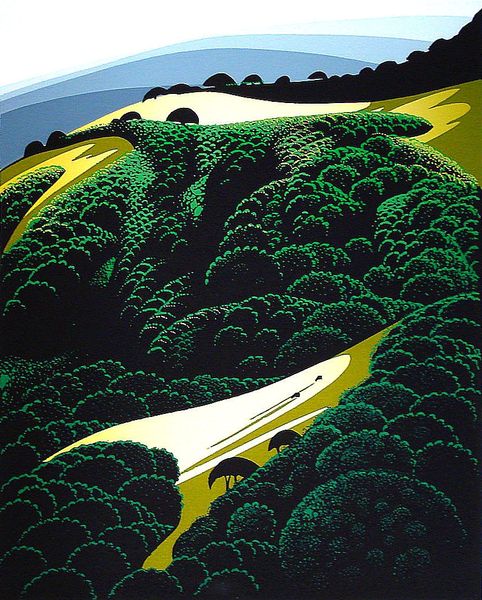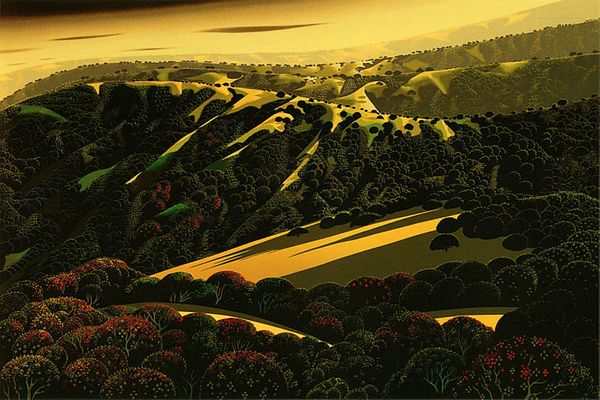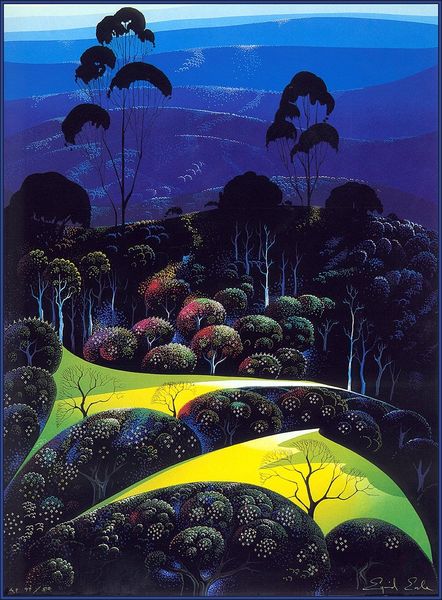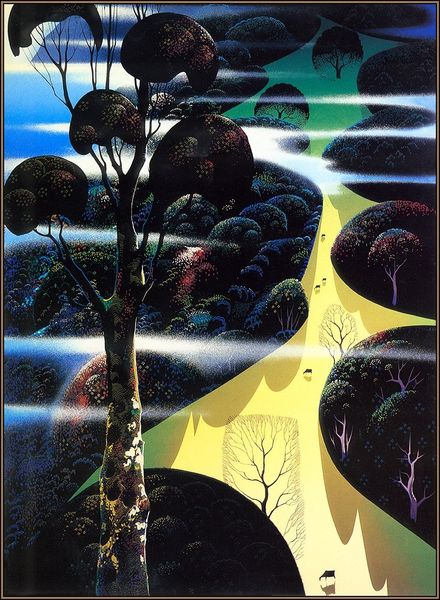
Copyright: Eyvind Earle,Fair Use
Curator: Eyvind Earle's "Quiet Pastures" from 1996 presents a striking panorama executed in acrylic paint. Its abstract yet recognizable landscape elements immediately establish a serene mood. What are your first impressions? Editor: Initially, the hyper-real colors against the simplified forms create a compelling juxtaposition of tranquility and artificiality. It reads to me almost like an unsettling Eden, the intense colors and lack of obvious human presence generating a subtle tension despite its title. Curator: Precisely! Notice how the artist segments the composition through fields of bold colors and tightly organized shapes. Earle employs a strategic manipulation of perspective; see how the distant mountains are flattened almost to graphic elements against the geometrically patterned foreground? The romantic landscape reads as stylized, almost artificial, a construction using shape and color alone. Editor: That construct, or artifice, interests me. While superficially pastoral, one might analyze the painting as a reflection of the increasingly precarious relationship between human interventions like agriculture—represented by the idealized pastures—and a ‘natural’ world relegated to the backdrop. What price for a perfect field of green? Curator: Your perspective underscores how Earle uses a refined technical language of romantic landscape painting in the 20th century. One can note how he minimizes detail, accentuating pure color and shape, an extreme exercise of abstraction with the subject staying legible. The sky and land are reduced to elemental bands, formal blocks for light. Editor: Exactly, there is a visual reduction at play. And while his works reference the traditional, natural landscapes of Romanticism, the bold flattening feels contemporary and challenges those idealized visions by reflecting current social considerations of humans’ impact. Is this quiet pasture truly undisturbed? Is it only for certain groups? Curator: It presents then a study in contrasts—between tradition and innovation, surface tranquility and latent questions, naive art, romanticism and abstraction. These counterpoints add to its visual interest and conceptual depth. Editor: Agreed. Earle provides fertile ground for considering not just what we see, but the critical lenses we need to apply in an ever-changing world.
Comments
No comments
Be the first to comment and join the conversation on the ultimate creative platform.
